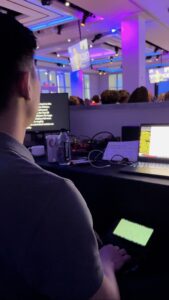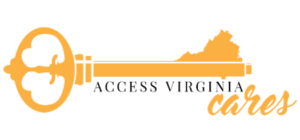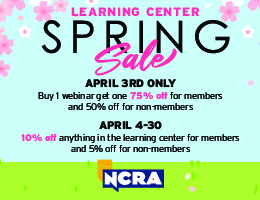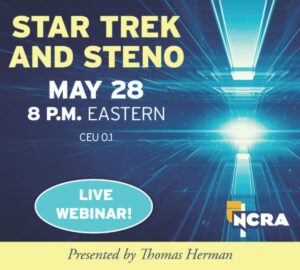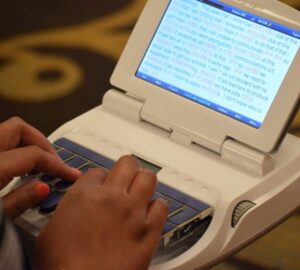By Jackie Hippolyte
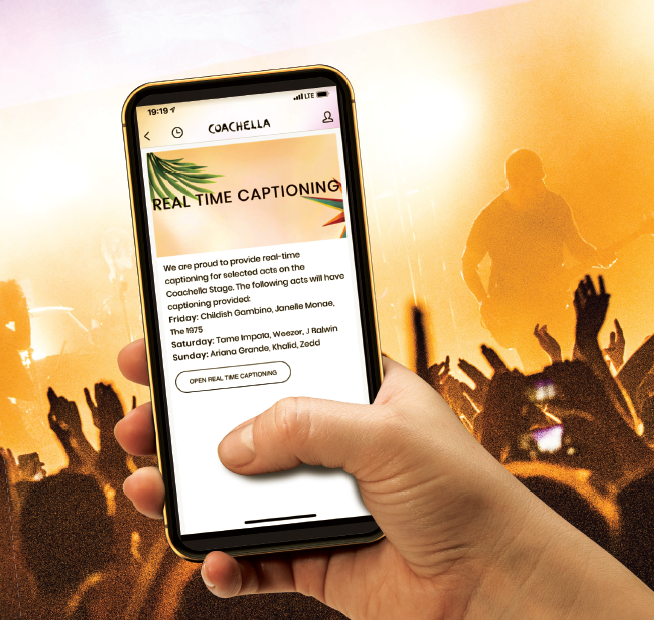
NCRA member and captioner Stanley Sakai, CRC, helped us delve into the technical aspects of his collaboration with captioner Isaiah Roberts, RPR, on the Coachella and Stagecoach captioning projects.
Stan’s friendship with Isaiah began on Facebook and later blossomed when they met at an NCRA Convention & Expo. The Coachella and Stagecoach projects in early 2019 were their first work-related collaboration.
Stan’s background
Much of Stan’s background is self-taught. In 2011 when Plover was in its infancy stage, he purchased a Gemini machine of eBay and took it to class. From there, he started to build his dictionary and the beginning of his captioning career.
As with captioning, Stan was also a self-starter with regards to software programming. It was actually his frustration with an experience that led him to pursue this arena, and his skills developed from there. Stan wanted a better way to live stream captioning — something that was clean and worked on the web where he could stream text on a web platform versus asking the user to download the software on an application.
In 2015, after facing some challenges with the equipment he was using while serving as a live cap- tioner in a web development course, he reached out to the course instructors and used their feedback and instructions, along with some of his own research, to teach himself how to program.
The Coachella and Stagecoach projects … the beginning
In 2018, Isaiah had approached Coachella and in- quired about captioning services for their audience, and soon learned that no such services were current- ly being offered. Coachella admitted that previous captioning requests went unfulfilled as they were not familiar with the service and had not known where to begin.
In learning this, Isaiah offered his services and mentioned that he knew of someone with the techni- cal expertise (Stan), who could fulfill their captioning requirements. In a short amount of time, Stan had developed some code to match Coachella’s website branding (incorporating the use of his app “Meow”) and pitched a demo to Coachella’s team who were soon sold on the idea.
This solution basically paved the way for Coachel-la to provide captioning services to their audience via their app. The solution was perfect as it provided universal access to all, whether attendees needed captioning services or not as all attendees were re- quired to download the Coachella app.
For the full background story, read the first article on TheJCR.com titled Bringing captions to Coachella.
Stan explained a little more about some of the technology behind the projects.
The Skills
Soft skills
Although the success of the projects was obviously in part due to the combination of technological and live captioning skills, Stan admitted that soft skills also played an essential role in the project’s success.
Stan notes that although there are definitely other stenographers out there with the right skills to caption live concerts, it requires a certain personality and level of flexibility to perform captioning services in such an unpredictable and less than “calm” environment, and he was grateful that both he and Isaiah had prior experience with music festivals.
Teamwork
Stan also credits teamwork as being a key reason for the success of this project and says that Isaiah was definitely the mastermind behind the strategy and planning of the projects, while he, Stan, fulfilled the role as the technical guru, which made for a perfect tag team.
Technology:
Start of Coachella project
The initial calls with Coachella began in late 2018, and the official work phase began in January 2019. It took Stan and Isaiah approximately four months to complete the apps for Coachella and Stagecoach.
Stan did not have access to the back-end code of Coachella’s site to mimic their website branding, but he was easily able to develop the code from scratch within his app, Meow. With regards to Stagecoach, the app User Interface was different and required additional customization to match their website branding.
Steno/typing and editing software
Stan used Plover, an open source User Interface (UI) controller — from the Open Steno project — where a user can type into any window, using a keyboard as a steno machine. For web editing, he utilized Upwordly, a web interface editor which displayed directly in the clients app, like the ones for Coachella or Stagecoach.
Servers
The expected traffic for the Coachella app was approximately 130,000 attendees, which used a total of five servers — two in New York, two in Los Angeles, and one in San Francisco. Having multiple servers running the same app simultaneously ensured there was back up in place at all times, in the event one of the servers were to fail. The servers served over 1000 connections per minute (per server). A load test using utility called Artillery JS was conducted to simulate 10,000 users on the app at the same time.
The load on Coachella’s platform was approximately 700 connections per day and approximately 1,200 per day for Stagecoach.
Live streaming the lyrics
Stan and Isaiah were normally given the scripts to the songs twenty minutes beforehand, but in the usual fashion, they found a way to streamline the process to make it easier and more efficient. They created a large text file of all the songs beforehand (when possible). In typical tag team fashion, one would write the lyrics as they heard it to figure out what the song was playing, and when that was determined, the other would search for the lyrics online and would then copy and paste into the text file for upload to the app. If an artist ad-libbed, however, they would then caption the song live.
Some may be wondering how they handled lyrics in a foreign language? Well, there just so happened to be an artist who sang in Spanish — J. Balvin — and fortunately Stan happens to speak fluent Spanish and had a Spanish dictionary.
Summary of technology used
■ Meow: JavaScript-based app created by Stan that displays live captioning. It buffers events from a local port that CAT software communicates on, and then translates them to object-based instructions that are rendered as text on website.
■ App plugin: Stan built a custom plugin to allow a connection between the app and Eclipse,
and the app and Catalyst. (See YouTube.com/ watch?v=PtlriHufTBA&t=2s for more informa- tion.)
■ Plover: Part of the Open Steno project, which is an open source stenography engine written in Python that allows users to use their keyboard as a steno machine.
■ Upwordly: A realtime transcription delivery tool and a content management system (CMS) for realtime stenographers.
■ Angular and React: Front-end development framework that allows the creation of dynamic web pages.
■ Web sockets connection: Communication pro- tocol that transmits the live text to the server to be sent out to the web page, without refreshing or pinging the server.
■ Artillery JS: A utility used to conduct load test- ing on the servers, simulating a specific amount of traffic/users.
■ Servers: Five servers managed using Docker swarm.
■ JavaScript: A programming language mostly known as the scripting language for web pages. It also works in some non-browser environ- ments, like Apache CouchDB and Adobe Acrobat.
■ Python: Another programming language often used to develop web pages and apps, Python is particularly helpful when building prototypes.
Finding his “sweet spot” and giving back
We asked Stan if he ever considered pursuing a career field as a software developer full time, and his response was that he has found the perfect “sweet spot” where he can use his assets both as a live captioner and program/software engineer to not only fulfill his career aspirations but also promote caption- ing through the use of technology.
In addition to finding that “sweet spot,” Stan says it was gratifying to be able to give back and showcase what is possible with captioning and technology.
Project Takeaways
Stan and Isaiah have created their own niche for captioning and hope to get others excited about the profession and its possibilities. This project with Coachella and Stagecoach was not only a rewarding and fun experience but has opened the door and created a variety of inquiries about the Open Steno Project, Plover, and ways to secure captioning jobs like Coachella.
Stan hopes that projects like Coachella and Stagecoach can put a modern take on the captioning profession and showcase it in a space beyond just depositions, by demonstrating both the collaborative and technical aspects of bringing a project together. Since this project launched, the duo team have been asked via social media if they planned to cover more stages in the future, which Stan says is definitely a possibility.
Stan’s thoughts and takeaways on how other professionals can find and seize opportunities:
• The key is the Americans with Disabilities Act (ADA). Always ask how the captioning community can assist with a venture.
• Insight: Only a fraction of the hard of hearing community uses sign language, and captioning is not something many think about, so making others aware is vital.
• Partner with someone who has skills that you may not have. Be strategic and harness the strengths of the people around you. Stan said: “You cannot do everything on your own.”
• Think beyond your comfort zone — and take action beyond that vision.
Summary
We asked Stan about opportunities for future music festivals and he noted that since the main legwork is already developed, it would be easy enough to reproduce what he needs by just creating the front interface coding and formatting to match the branding of any client’s website.
With regards to his day-to-day, Stan admits he always looks for an easier way to do things and has created other shortcuts and plugins to streamline his daily work routine — such as emailing files/transcripts, and more.
Partners and Thanks to…
• Ten Fifty was quite instrumental in this project and helped Stan and Isaiah connect with Coachella and also arrange all of their housing and other logistics.
• Stan and Isaiah were fortunate enough to work with the digital production manger of Golden Voice, which produces Coachella.
• Mirabai Knight, RDR, CRR, CRC, is Stan’s mentor and the person who taught him steno.
Jackie Hippolyte is NCRA’s Web Communications Manager. She can be reached at jhippolyte@ncra.org.

